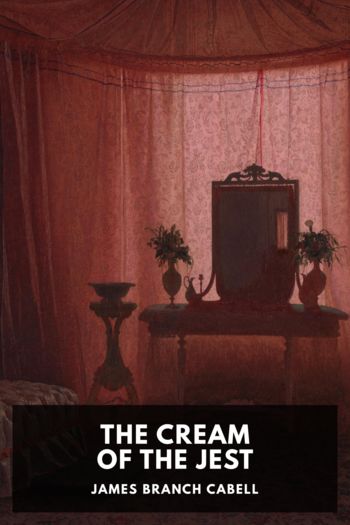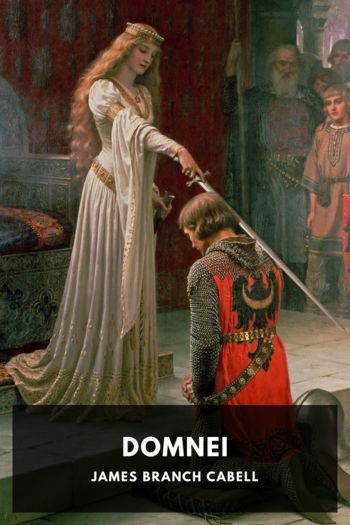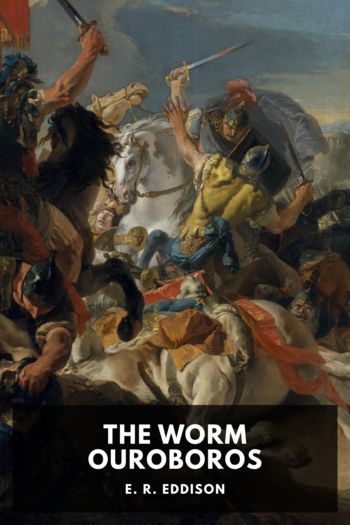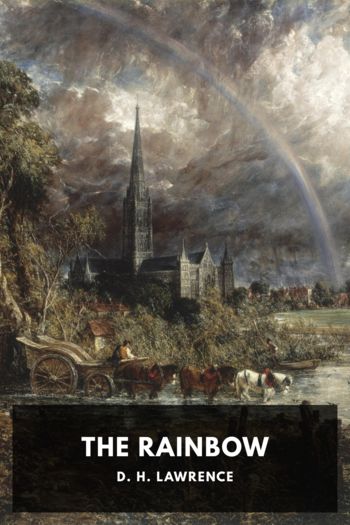The Cream of the Jest by James Branch Cabell (the first e reader TXT) 📕

- Author: James Branch Cabell
Book online «The Cream of the Jest by James Branch Cabell (the first e reader TXT) 📕». Author James Branch Cabell
Then he perceived that there was no such thing as symmetry anywhere in inanimate nature. …
It was Ettarre who first pointed out to him the fact, so tremendously apparent when once observed, that there was to be found nowhere in inanimate nature any approach to symmetry. It needed only a glance toward the sky the first clear night to show there was no pattern-work in the arrangement of the stars. Nor were the planets moving about the sun at speeds or distances which bore any conceivable relation to one another. It was all at loose ends. He wondered how he could possibly have been misled by pulpit platitudes into likening this circumambient anarchy to mechanism. To his finicky love of neatness the universe showed on a sudden as a vast disheveled horror. There seemed so little harmony, so faint a sense of order, back of all this infinite torrent of gyrations. Interstellar space seemed just a jumble of frozen or flaming spheres that, moving ceaselessly, appeared to avoid one another’s orbits, or to collide, by pure chance. This spate of stars, as in three monstrous freshets, might roughly serve some purpose; but there was to be found no more formal order therein than in the flow of water-drops over a mill-wheel.
And on earth there was no balancing in the distribution of land and water. Continents approached no regular shape. Mountains stood out like pimples or lay like broken welts across the habitable ground, with no symmetry of arrangement. Rivers ran anywhither, just as the haphazard slope of earth’s crevices directed; upon the map you saw quite clearly that their streams neither balanced one another nor watered the land with any pretense of equity. There was no symmetry anywhere in inanimate nature, no harmony, no equipoise of parts, no sense of form, not even a straight line. It was all at loose ends.
But living things aimed toward symmetry. In plants the notion seemed rudimentary, yet the goal was recognizable. The branches of a tree did not put out at ordered distance, nor could you discern any definite plan in their shaping: but in the leaves, at least, you detected an effort toward true balance: the two halves of a leaf, in a rough fashion, were equal. In every leaf and flower and grass-blade you saw this never entirely successful effort.
And in insects and reptiles and fish and birds and animals you saw again this effort, more creditably performed. All life seemed about the rather childish employment of producing a creature which consisted of two equal and exactly corresponding parts. It was true that in most cases this effort was foiled by an uneven distribution of color in plumage or scales or hide; but in insects and in mankind the goal, so far as went the eye, was reached. Men and insects, to the eye at least, could be divided into two equal halves. …
But even so, there was no real symmetry in man’s body save in externals. The heart was not in the center; there was no order in the jumbled viscera; the two divisions of the brain did not correspond; there was nothing on the left side to balance the troublesome vermiform appendix on the right; even the lines in the palm of one hand were unlike those which marked the other: and everywhere, in fine, there was some irrational discrepancy. Man, the highest form as yet of life, had attained at most only a teasing semblance of that crude symmetry toward which all life seemed to aim, and which inanimate nature appeared to ignore. Nowhere in the universe could Kennaston discover any instance of quite equal balance, of anything which, as vision went, could be divided into two similar halves—save only in man’s handiwork. Here, again, insects approached man’s efforts more closely than the rest of creation; for many of them builded almost as truly. But man, alone in the universe, could produce exact visual symmetry, in a cathedral or a dinner-table or a pair of scissors, just as man so curiously mimicked symmetry in his outward appearance. The circumstance was droll, and no less quaint for the fact that it was perhaps without significance. …
But Kennaston bemused himself with following out the notion that life was trying to evolve symmetry—order, proportion and true balance. Living creatures represented life’s gropings toward that goal. You saw, no doubt, a dim perception of this in the dream which sustained all human beings—that tomorrow living would begin to be symmetrical, well-plotted and coherent, like the progress of a novel. … And that was precisely what religion promised, only in more explicit terms, and with the story’s milieu fixed in romantic, rather than realistic, settings. Kennaston had here the sensation of fitting in the last bit of a puzzle. Life, yearning for symmetry, stood revealed as artist. Life strove toward the creation of art. That was all life cared about. Living things were more or less successful works of art, and were to be judged according to art’s canons alone. The universe was life’s big barren studio, which the Artist certainly had neither planned nor builded, but had, somehow, occupied, to make the best of its limitations. For Kennaston insisted that living things and inanimate nature had none of the earmarks of being by the same author. They were not in similar style, he said; thus, presupposing a sentient creator of the stars and planets, it would seem to have been in contradiction of his code to make both a man’s eyes of the same color.
It





Comments (0)